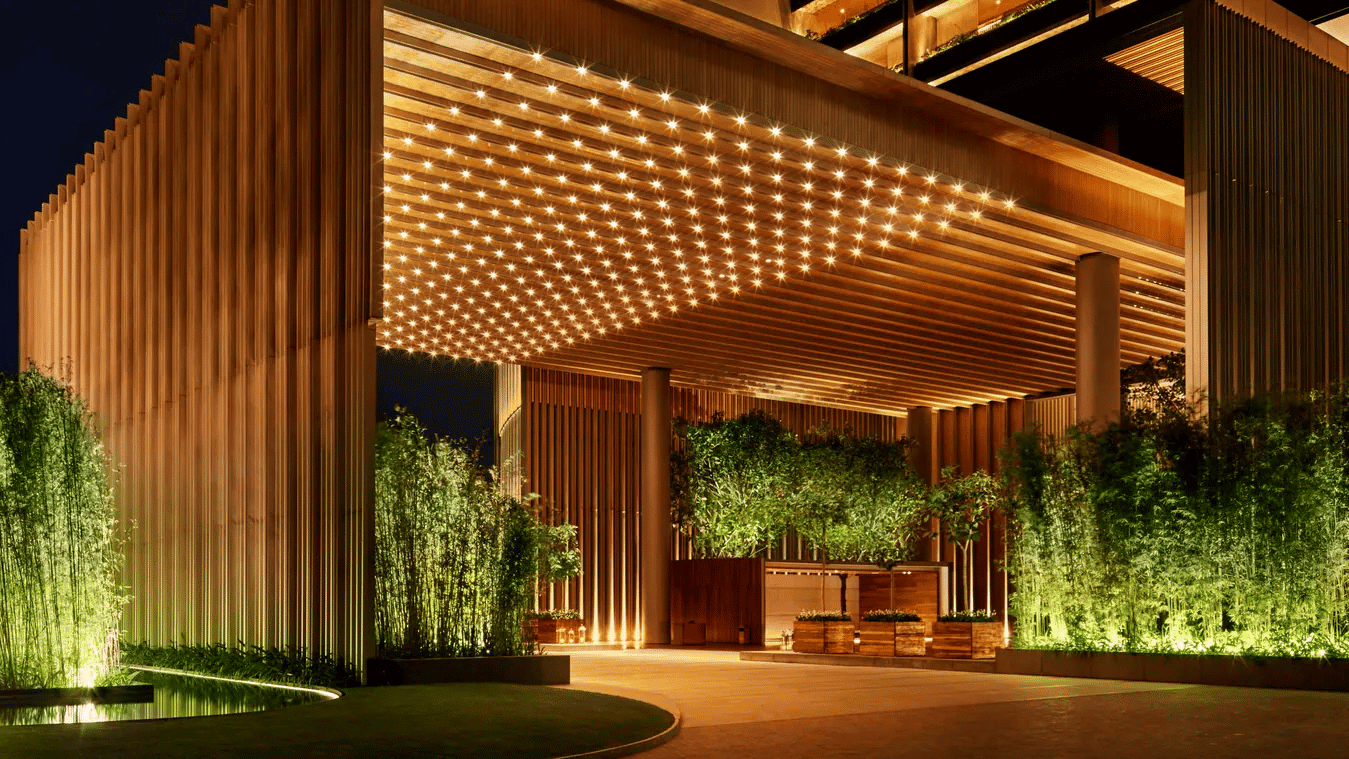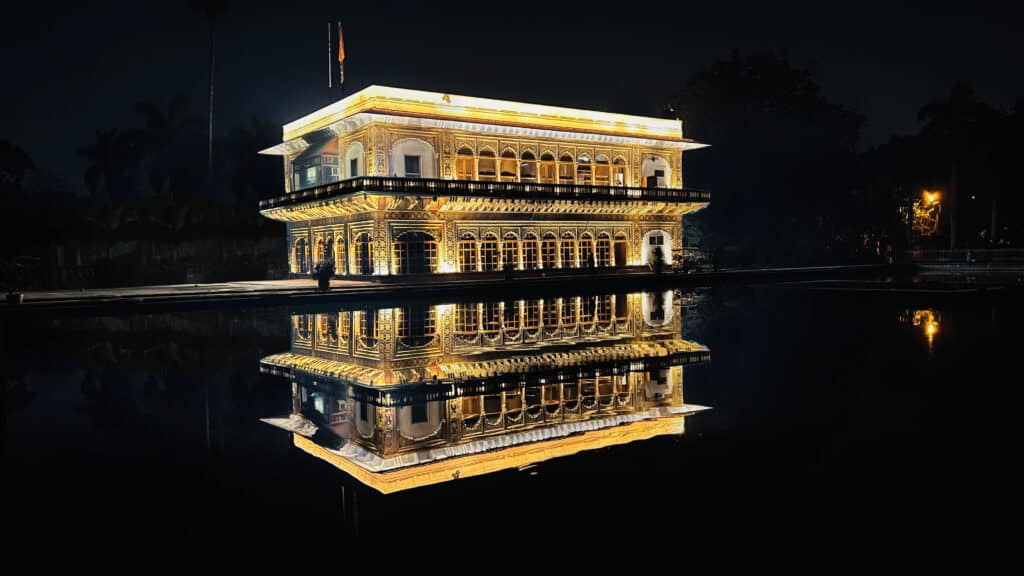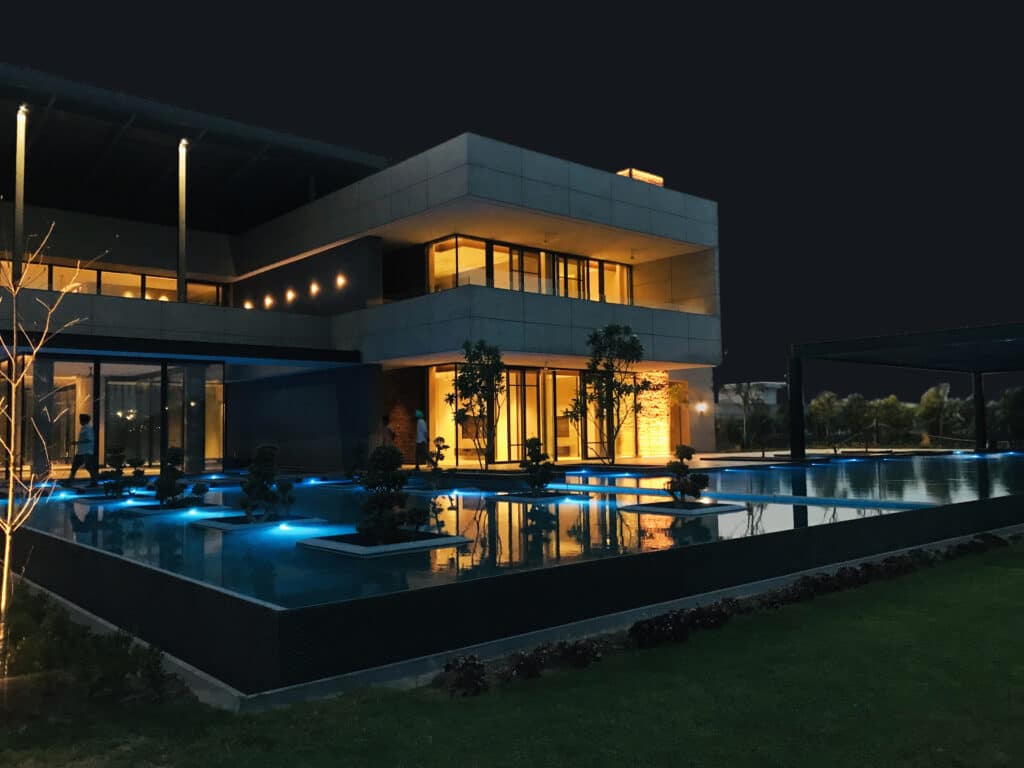
Speaking to Smart Home World, Ar. Ashish Bahal, Partner, Lucent Worldwide, discussed the importance of a proper lighting system in our homes, the need for awareness towards new technologies and the latest innovations.
Can you sum up your journey from being an Architect to becoming a Lighting Designer?
After graduating from the School of Planning and Architecture in Delhi in 2001, I began my career as an architect, working on projects ranging from habitat development to low-cost construction to interior design. I began working with Philips Lighting (now Signify) in the Technical Lighting Department for nearly 11 years. At this organisation, I learnt about lighting design and developed my own lighting knowledge. I am currently a Partner and full-time lighting designer with Lucent Worldwide, Asia’s largest lighting design business.

Can you explain the importance of lighting in our homes?
Lighting is one of the most important elements in any interior space. In India, our culture, way of life, and health patterns are all based on lighting. And since the pandemic, we have been spending a lot of time indoors. These elements have increased the significance of artificial lighting in our day-to-day lives.
Another aspect of light’s significance in our lives is the experience it provides. We as humans ingest a great deal of information through the channel of light. Consequently, if any space is improperly illuminated or over-illuminated, our experience suffers, eventually harming our health. The severe daylight cycles of the Nordic countries, for instance, have an extremely negative impact on the health of the local populace.
Consequently, lighting in our home must be of the highest significance. It should improve our efficiency. Lighting should be comfortable to the eyes and not glaring. It must have accurate colour renditions and a well-executed design. Homeowners must illuminate their houses based on their activities, so lighting not only contributes to the well-being of the occupants but also serves as an aesthetically pleasing element of the home.

There is very less awareness on the importance of lighting and well being. In many households users prefer utilitarian illumination even when cheaper and more effective alternatives exist. Your opinion on the same?
This comes down to the demographics of our country. In one demography, 60 to 70 per cent of the population belongs to the middle to lower-middle-class category. Even if they can afford less expensive options, their psychological conditioning compels them to spend only on daily necessities.
Alternatively, as our economy grows, the younger generation is positioned in a higher income category than prior generations. So families are climbing the social hierarchy, but it will take time for them to acclimate to a lifestyle that prioritises comfort above necessity.
So it’s not that people can’t afford better lighting, but we as a culture are at a very fascinating juncture in which we are progressively going towards opulent living even though awareness is a bit slow to catch up.
A further important question to examine is whether market awareness is being promoted by industry stakeholders. If businesses are simply concerned with maximising revenue rather than educating consumers on the advantages of the technology, growth will be hampered. And this is likewise the case in the Indian marketplaces. Simply educating people on the uses and benefits of technology and its effects on our health and well-being is the solution to this problem.

Proper education will not only produce a new generation of lighting designers but also revitalise the market. So we do need a paradigm shift from both ends of the industry. We need improvements upgradation in education system at each level to observe a significant difference and rise in awareness. Everyone from A-list designers and architects to college educators should work towards encourage students to learn lighting techniques.
What are the measures adopted by Lucent Worldwide in educating users?
Lucent Worldwide is promoting awareness through social media and partner organizations. I deliver lectures and advise colleges on how they can do better with lighting. In addition to aesthetic comfort and efficiency, our curriculum also focuses on health and well-being. In addition, we train young architects on using human-centred lighting and how to improve things with lighting. As knowledge partners, we strive to share our expertise with the younger generation.
How crucial is collaborating with a System Integrator while working on a high-end project?
We as designers visualise the project. It is our responsibility to provide clients with a system that meets their needs. However, this vision is incomplete without execution. Designers and architects are occasionally ignorant of the technical aspects of execution. Our team at Lucent firstly identifies the need of the space, its architecture, its interiors, and every other element before designing a system, which is then implemented by System Integrators.

System Integrators occupy a crucial position in this sector. We have developed strong relationships with a variety of System Integrators. Our professional connection has progressed to the point where we enjoy a remarkable partnership that is founded on mutual understanding; as a result, we have a high regards for the services they provide.
As technology gets better every day, the interfaces get better, the systems get more complex, communication speeds up, etc. Architects have a hard time keeping themselves updated that is the reason appointing a System integrators is a must..
What steps do you follow while ideating a design?
Each design is unique. Any design process is highly pliable in its approach. Nonetheless, some considerations must be made. Firstly, we need to identify the interiors, dimensions, natural lighting, and existing systems, and we must try to grasp the human element of the space.
It is important to understand the human element of the space before we start designing. We have to take into account the age ranges of the people using the area, the activities that will be carried out, their lifestyles, their health, etc. At this point, one of the most important things to think about is how well people can adapt to new technology.

With lighting control systems, it’s become common to develop the fanciest controls to attract buyers from the younger generation. But when designing a lighting system, we need to think about how it will function. By doing this, we can make the system extremely user-friendly and robust.
Next, we analyze the installation method. We cannot just remove all existing wires or knock down the walls to install new wiring. In such circumstances, retrofit solutions are useful.
Walk us through a lighting system’s application, control technology and benefits?
Any type of lighting system is essentially a communication and response system. Lighting systems can respond to signals, decode them, and carry out directives. Additionally, these systems are customizable. What makes a lighting system fascinating is the layering and programming of the lights.
The greatest lighting is created by a well-layered lighting system. Additionally, it provides the possibility to set several moods/scenes and utilises the same area for a variety of activities. This is probably the best benefit of a lighting system. A good lighting system can transform a room for a fraction of the price of the property. Your living room, for example, may be converted into a home theatre without the need for a separate room.
In addition to cheaper purchase costs, other benefits like personalization, comfort and ease of use, energy savings, and sumptuous experience increase the desirability of a lighting system.
What is the greatest innovation in the lighting industry?

The ability for gadgets to communicate is the biggest invention. This has become the norm by which all new innovations in the sector are measured. Everything is conceivable due to our ability to connect and communicate with technology, from smart homes to smart cities. The cornerstone of intelligent technology is the capacity for two-way communication between users and systems.
What have been the trends in the lighting industry for the last few years?
Since the epidemic, residences have become offices as well. Hybrid working has raised the demand for aesthetically pleasing lighting. The household lighting market has been propelled by visual comfort and visual pleasure. Users desire illumination that enhances their productivity and allows them to choose different scenes for different times of the day.
Lighting is a matter of pride in modern homes. Therefore, people prefer practical lighting and mood lighting. Additionally, adaptive lighting systems have increased in prominence. In an increasing number of projects, lighting that can simulate the colour intensity and brightness of daylight is being deployed.
In the business sector, Lucent is engaged in projects involving the installation of landscape lighting and facade lighting. The market for media facade lighting and soft displays has increased in the facade lighting industry.















